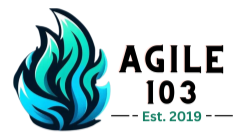Facilitated By Ola M.
In fast-moving Agile environments, risk isn’t a one-time check—it’s an ongoing challenge. Our June 2025 event, “Adaptive Risk Management in Agile: Iterative Mitigation, Retrospectives, and Impediment Removal,” dives into practical ways to manage risk dynamically within sprints, leveraging retrospectives and impediment management.
1. Iterative Risk Identification & Mitigation
Agile risk management embraces a proactive, iterative mindset. Instead of scheduling risk reviews once, teams continuously identify, assess, and respond to risks at every sprint planning and retrospective. This approach ensures adaptability as new risks emerge.
Sprint-Level Risk Practices:
-
Sprint Planning Risk Assessments: At the start of each sprint, quickly review backlog items for risk, using techniques like Risk Poker or Risk Mapping to prioritize efforts.
- Risk-Driven Backlog Prioritization: Tackle high-risk stories early—“fail fast and cheap” helps avoid costly surprises.
2. Embedding Risk into Daily & Sprint Ceremonies
Risk discussions don’t belong solely in planning—they’re woven into daily stand-ups and retrospectives:
-
Daily Stand-Ups: Include a “risk check” item—flag anything that may threaten sprint goals or delivery.
- Sprint Retrospectives: Systematically review which mitigation actions worked, what new risks surfaced, and root causes using techniques like the Five Why.
3. Impediment Backlog: Visualizing and Addressing Risks
Impediments are often disguised risks. A public Impediment Backlog—a Kanban-styled board listing blockages—makes threats visible and prioritized.
-
Create & Prioritize: Encourage any team member to add issues to the board. Group and escalate blockers beyond the team’s control.
-
Root Cause Focus: Your goal isn’t to patch symptoms; it’s to eliminate causes. Use retros or Five Whys to dig deeper .
-
Time-box Resolutions: Assign senior-level “blocker busters” to resolve systemic impediments quickly.
4. Roles & Responsibilities
-
Scrum Master / Agilist: Facilitates risk identification, removes organizational blockers, and coaches the team on proactive risk removal.
-
Team Members: Share open, honest risk and impediment reports—no delay or sugarcoating.
-
Product Owner: Supports reprioritization based on risk rather than just features.
5. Continuous Improvement Through Metrics
Tracking risk management effectiveness builds discipline:
-
Number of Identified & Closed Risks per Sprint
-
Frequency of Impediments Logged
-
Time Elapsed to Resolve Blockers
-
Percentage of Risks Escaping
These feed into continuous improvement and retrospectives.
6. Event Highlights
-
Interactive Workshops: Build and manage a live Impediment Backlog.
-
Real-World Case Study: Example of adaptive risk management in enterprise Agile.
-
Panel Discussion: Best practices in integrating risk into retros, planning, and Kanban.
-
Templates & Visuals: Ready-to-use tools, board setups, and risk templates.
Don’t let risk blindside your next sprint.
Register now
for Adaptive Risk Management in Agile and master iterative strategies, retrospectives, and impediment removal in June 2025.
